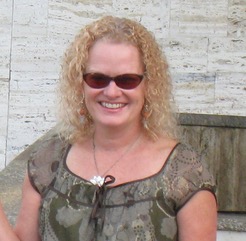Taking Nursing Back to Its Roots with CardioStart
by Maryam Ocasio, RN, BSN
Nurses working in a hospital in the United States can sometimes feel like they are in a hopeless cycle of working long shifts, while wondering if they’re making any difference in their patients’ lives. They spend more time documenting their patient interactions than having them. The long arduous shifts wear on them over time, leading them to wonder when and how their passion for nursing burned out.
Humanitarian medical missions take nursing and healthcare back to its roots. CardioStart is an international nonprofit organization that brings doctors and nurses from all parts of the world to provide lifesaving cardiac surgeries and services in underserved regions of the world. CardioStart has successfully completed 111 missions in 34 countries, performing over 2000 heart surgeries in children and adults and counting.
 Diana S. Klein RN, BSN, CCRN is a teacher and an advanced critical care nurse who has volunteered with CardioStart for over 20 years. After her first mission in 2002, she was “hooked.” To date, she has gone on over 10 missions to Uganda, Dominican Republic, Haiti, and most recently to Ecuador. The missions can be as short as five days long or as long as two weeks. Klein’s diverse background allows her to work in a primary care setting as well as surgical. In primary care, they set up a clinic so that the locals can see a doctor and dentist, many times for the first time in their lives. They provide basic prenatal care such as performing ultrasounds and giving vitamins to expectant mothers. Klein has assisted countless cardiac surgeries, repairing congenital heart defects and more.
Diana S. Klein RN, BSN, CCRN is a teacher and an advanced critical care nurse who has volunteered with CardioStart for over 20 years. After her first mission in 2002, she was “hooked.” To date, she has gone on over 10 missions to Uganda, Dominican Republic, Haiti, and most recently to Ecuador. The missions can be as short as five days long or as long as two weeks. Klein’s diverse background allows her to work in a primary care setting as well as surgical. In primary care, they set up a clinic so that the locals can see a doctor and dentist, many times for the first time in their lives. They provide basic prenatal care such as performing ultrasounds and giving vitamins to expectant mothers. Klein has assisted countless cardiac surgeries, repairing congenital heart defects and more.
The missions have taught her the importance of recycling, reusing, and reducing waste. Klein has learned to be a “MacGyver nurse,” being resourceful, and thinking outside the box. What may be considered disposable in the states could save someone’s life while on a mission from IV catheters to ambu bags, to ventilators. “I went to my first cardiac mission in Hospital del Niño, Panama City and we did 5 or 6 or 7 cases using the same blood pressure cuffs and the same ambu bags and these kids flourished.”
As inspiring as the missions are, they are not without their challenges. “It’s not for the faint of heart. There’s such a thing as culture shock. You must be prepared for working in very different circumstances,” says Klein. “Just when I was in Ecuador, I was in a 6.8 earthquake… I was running for my life. So, you got to learn how to keep yourself safe, basically.” These challenges, however, do not deter Klein in the slightest. She has learned to appreciate the richness of different cultures, even picking up a couple of languages along the way. “This is bigger than just the small picture that we see. When you become a medical missionary, you see a bigger picture. I have a beautiful picture from being a nurse in the United States and the colors were beautiful, but then I became a medical missionary, and it made the colors of my painting even more vivid.”
So, what about the nurses who would like to help but aren’t able to physically go on a mission? Klein’s advice to them is to start saving supplies. Try to save anything from disposable stethoscopes and gauze to IV tubing and ambu bags and contact your local CardioStart office or visit their website.
Diana currently lives on a farm and collects medical supplies through colleagues and family members to send to countries in need. She hasn’t let her responsibilities on the farm stifle her drive for mission work. “I am on my knees, grateful for the blessings that God has given me and because of that I have a passion to give back. I’ll be doing this until I can’t carry a backpack.”
Leave A Comment